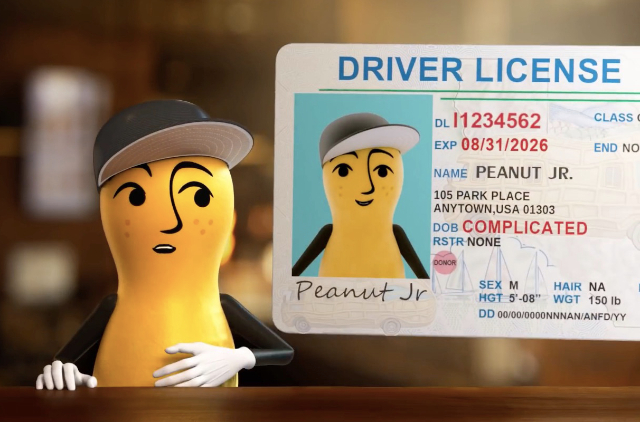Yesterday, we commented that April Fool’s Day passed very quietly this year. Today, I’ve decided to comment on an editorial I read that observed Super Bowl ad season snored, too. Could it be that the COVID crisis marked the end of an era?
 An intermediate chapter in the saga of the reborn Mr. Peanut… A great proto-
An intermediate chapter in the saga of the reborn Mr. Peanut… A great proto-
example of how the ultimate new-wave media campaign can be run…
The premise of the editorial was that conventional food marketing is dead. This comment was based on a major, all-at-once shift in the style and content of the 2023 Superbowl Game ads.
An audience of more than 115 million tuned in for the game but a significant number of the usual food and beverage advertisers failed to show. The big loser there was the NFL, itself, which (nevertheless) apparently managed to fill all its ad slots during the shows. On the other hand, how would we mere viewers know if the League offered deep discounts or BOGO deals to their mainstream advertisers to keep the picture looking flush and rich?
Price had to be a consideration
Advertising time/space prices have continued to rise over the past few years. Advertisers don’t begrudge paying more (to a point) because they are desperate to achieve and maintain an advantage in brand/product profile over the competition. But there are limits
Blogger Dylan Pavlik says there’s a delicate balance in play…
“2023 marks the highest cost per 30-second advertisement the Super Bowl has ever seen. We’ve seen incremental (on a large scale, obviously) increases every year but the record was broken this year with each 30-second advertisement costing $7 million dollars. This inflation has caused some companies to do one of three things: release their commercials the week before the Super Bowl to avoid the higher expense, turn to social media platforms for their marketing, or simply avoiding new commercials altogether.”
Is the NFL to blame?
We often talk about ‘greedflation’ by supermarkets as a cause of rising food prices. So… Is the NFL to blame? I guess the league is just doing what other entertainment companies have been doing: pushing the envelope as far as they can.
Look at last year’s ‘scandal’, when folks got up on their hind legs and finally refused to pay record event ticket resale prices. They also threatened to boycott big-name-entertainer concerts and sports events – unless the access stranglehold held by Ticketmaster and the like was broken. But governments have pledged to fix that oligarchic situation.
Pavlik hits a home run?
I agree wth Pavlik that one of the options for advertisers he has identified is probably the way things have to go – sooner or later.
I’ve been amazed to see how effective and economical social media ‘advertising’ has become since the big advertisers and agencies have taken serious note of the emerging channel.
Yup. The dollar still talks. And it’s saying: ‘Facebook’, ‘Twitter’, ‘Instagram’ and ‘You Tube’. At the center of this scenario are the so-called influencers, and those brands that are lucky to already have their own armies of millions of followers.
Huge social media commitment
Truth is, most of the big brands already have big social media presences. And they’ve been taking great pains to consolidate those and make them even bigger over the next two or three years. They wouldn’t be doing that if they didn’t feel they were getting their money’s worth or better out the investment.
Let’s not forget, either, that social media advertising and promo blends seamlessly with the current fever among fast food brands to get their mobile and website ordering, payment and fulfilment systems off the ground. That’s essential in bringing their entire next-gen business models up to speed.
No more new TV commercials?
Advertisers have traditionally committed paying enormous prices of super ad placements like the Superbowl show, and running some of their best ads only a few times over a short period. Using social media, advertisers can can engineer and run entire campaigns, for months, with soap-opera-like story arcs and a minimal financial investment in space and time. With some luck (and a lot of expertise), a new Web-based concept in advertising and promotion can make new mascots and product characteristics immortal icons. Or re-immortalize the classic ones.
If they play their cards right, the leading fast food brands can integrate their brands and products more intimately than ever before into customers’ lives!
Tell folks you saw it here first…
~ Maggie J.

